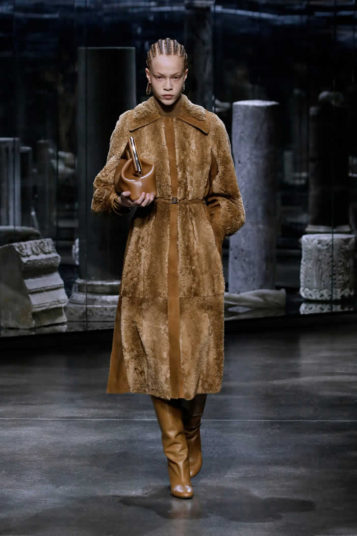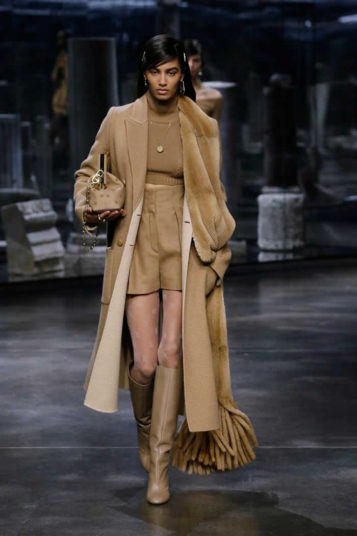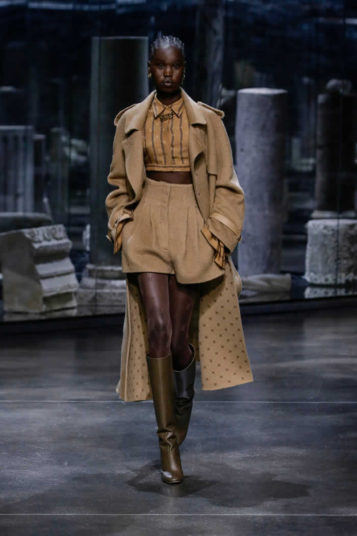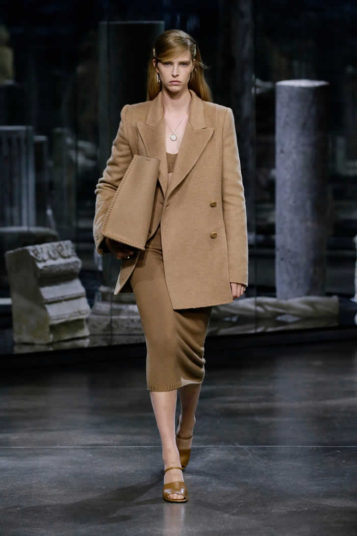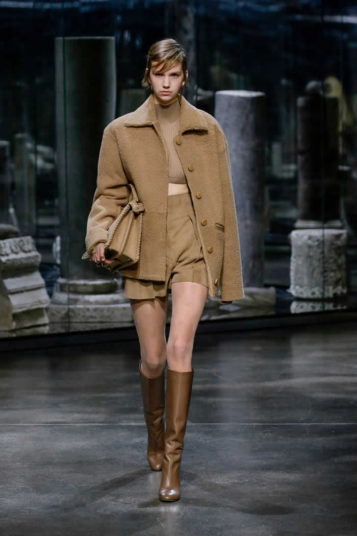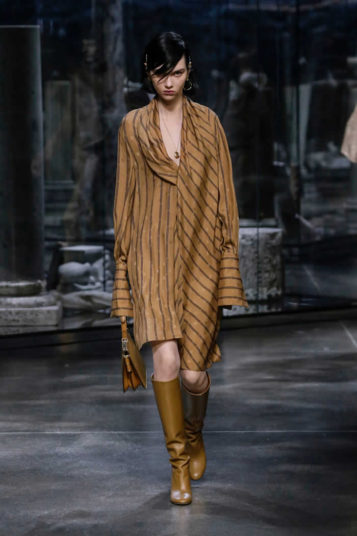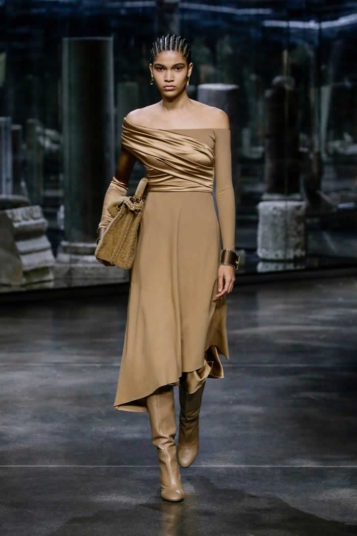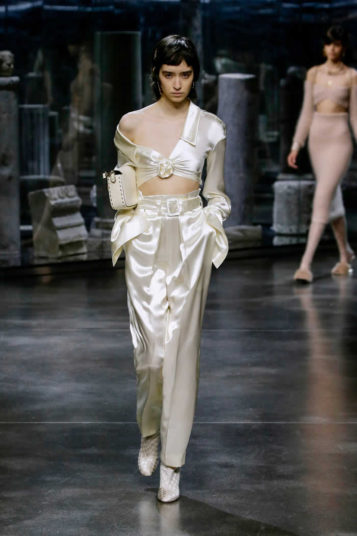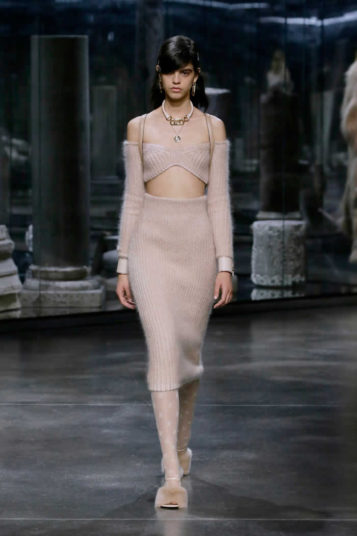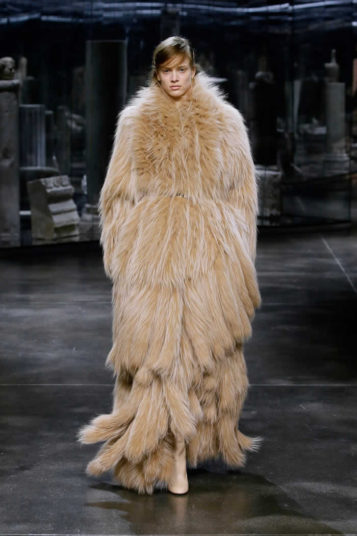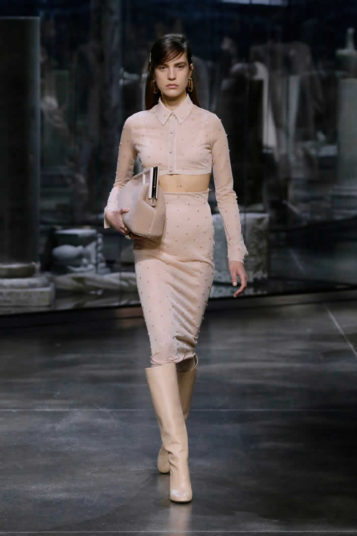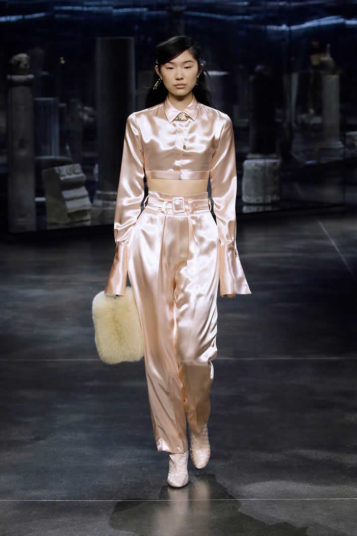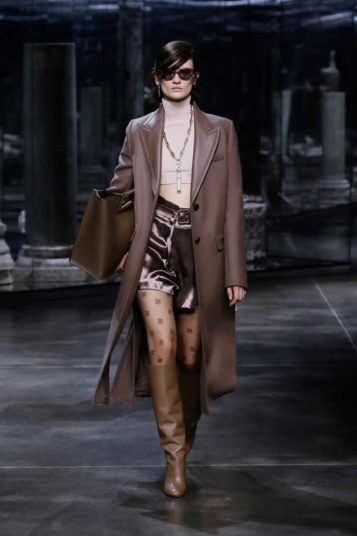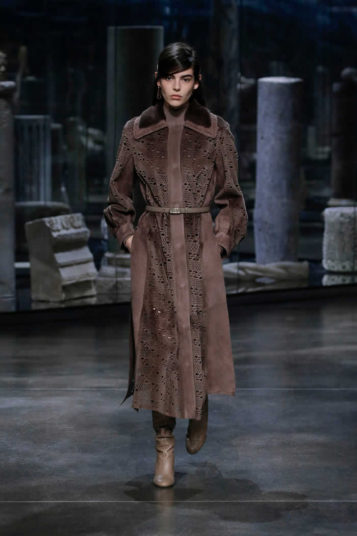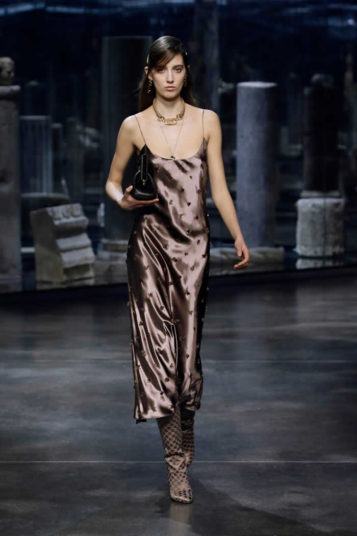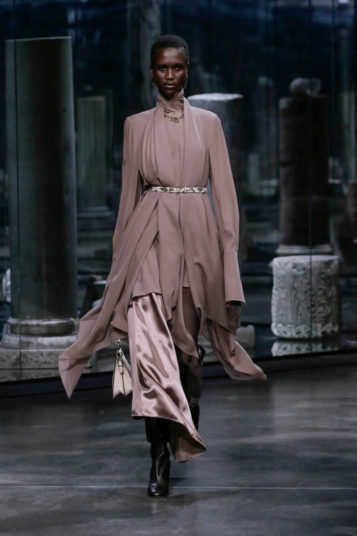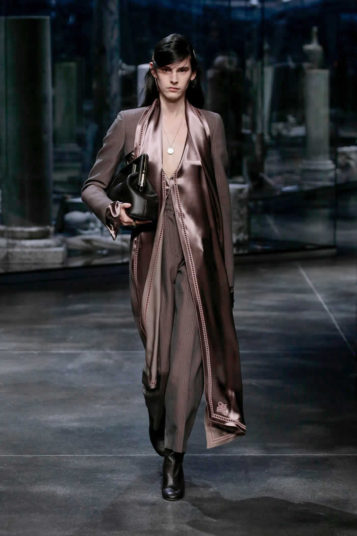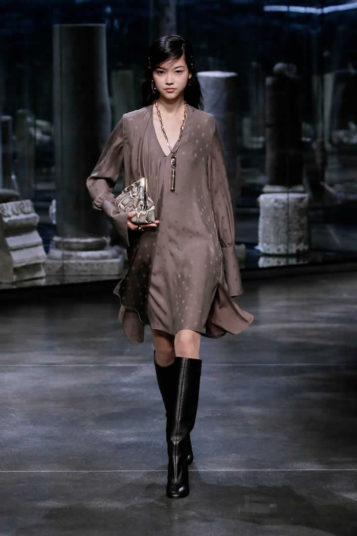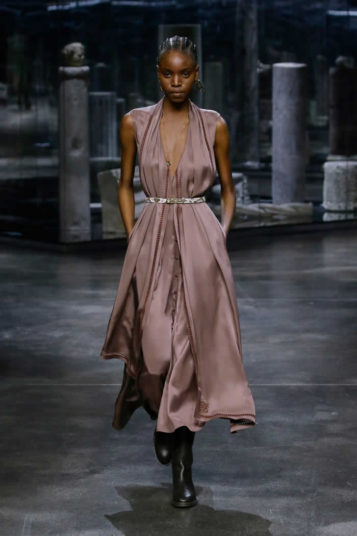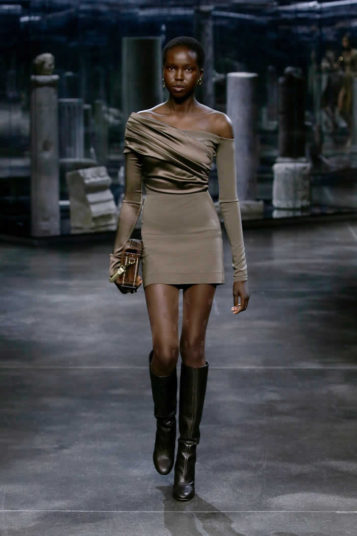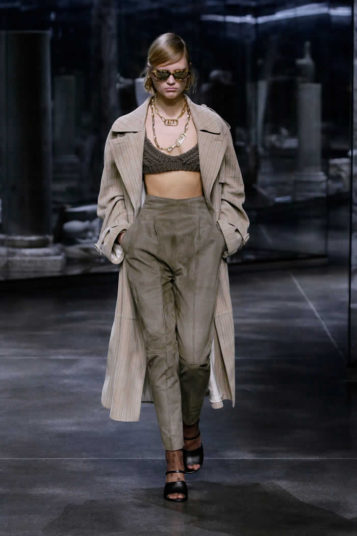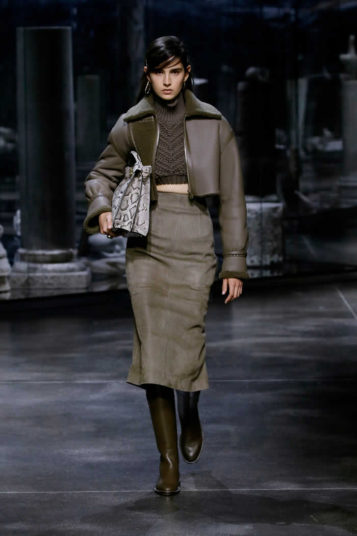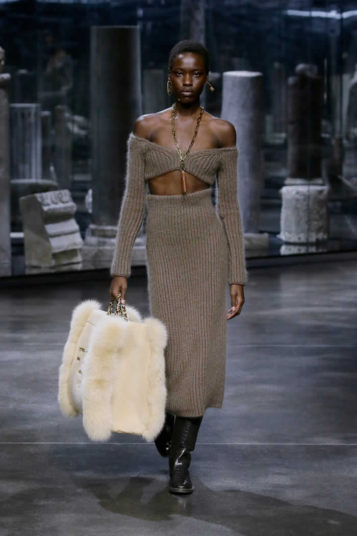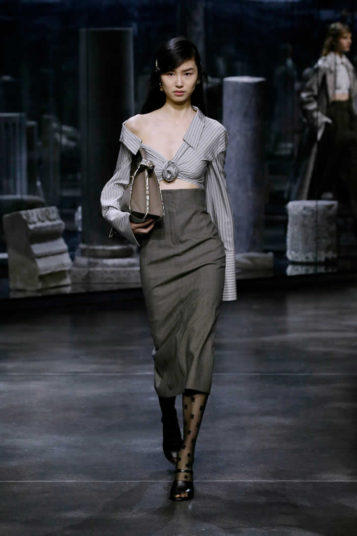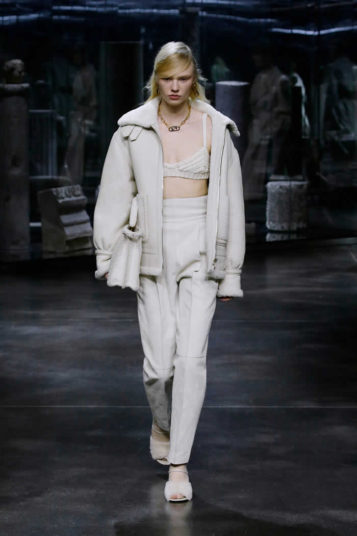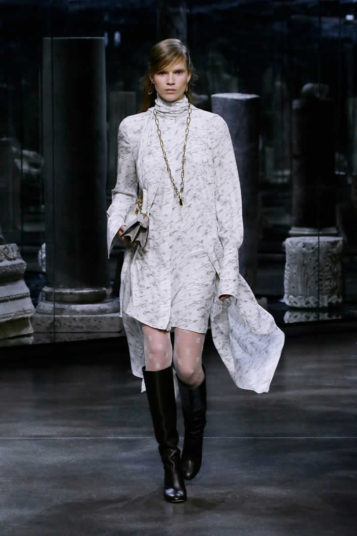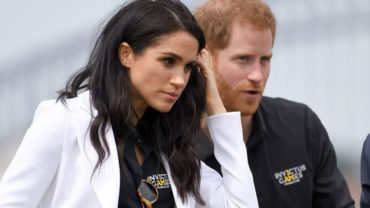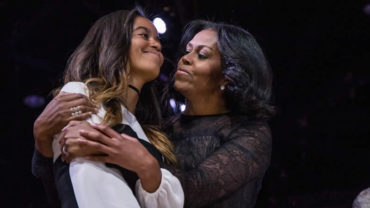Today that dynamic was neatly flipped. For his first women’s ready-to-wear show Jones delved deep into some of the stories most meaningful to the Roman house—hat-tipping along the way the many people who previously helped shape it—and thus began in earnest the process of adding his new voice to that narrative.
“So that was England to Rome,” said Jones of couture, “and this is England in Rome. Where we start.” But where exactly do you start with Fendi? Like Rome itself this house bristles with monuments of design, historical landmarks, and beguilingly beautiful vistas. Also like Rome itself, Fendi wasn’t built in a day: Adele and Eduardo Fendi opened their first shop on Via del Plebiscito back in 1926, dropping their first Selleria bags and leather goods six years later. Quite a lot has happened since.
Wisely, Jones neither committed himself to reflecting every aspect of the Fendi story (impossible), nor contained himself to narrowly defined elements of it (limiting). Instead he allowed the collection to unfold for the watcher as the city unfolds for the visitor, a multitude that coalesces towards the impression of a whole.
The models walked through a group of Damien Hirst-ish, F-shaped vitrines in which were scattered a multitude of apparent architectural fragments not unlike those that ornament the Roman Forum. The looks were all in neutral shades, both to reflect the mineral colors of the city and the organic shades that have dominated in Fendi’s history. Each evoked fragments of the different creative voices that have filled Fendi’s own creative forum; we were sightseeing Fendi through Jones’s eyes.
Spaghetti-fringed furs in contrasting herringbone, house Pequin striped silk shirting, and the opening loose-sleeved suede bonded mink evoked the period of Fendi’s first great flowering under the stewardship of the founders’ five daughters Paola, Anna, Franca, Carla, and Alda. It was they who recruited Karl Lagerfeld in 1965, and his great influence was stamped most clearly in a soft tote whose F-framed handle evoked his famous “Fun Fur” of that period.
It was visible too in a series of silhouettes homaging a few of the more than 70,000 Lagerfeld sketches in the house archive that Silvia Venturini Fendi had shown Jones during his immersion in the house. Significantly, these were often punctuated with the 1981 “Karligraphy” monogram. This had also featured in Jones’s couture debut and Lagerfeld’s final, posthumously presented collection at the house for fall 2019 to act as the punctuation mark linking two chapters in Fendi’s longer story: Ars longa, Vita brevis.
Much of this collection was concerned with precedent represented, but there was significant progression too. The grandest fur on show, Look 18, was a long-haired fox whose raw material had been upcycled from previous pieces. Jones said of upcycled fur “that it is probably more challenging to work with for the artisans, but they enjoy being challenged.” He also pointed to the abundance of by-product shearling—beautiful—and added that his approach in this regard is to balance two questions: “a) What does the customer want and b) What can we do ethically?”
“Turn the wheel and this way steer,” intoned the spoken word on Michel Gaubert’s soundtrack, “embrace the future and kiss”: That upcycled coat seemed to augur a direction-changing kiss upon Fendi’s tiller. And the potential for reinvention was framed steadily within the context of continuity, family, and history.
Elements of all were embodied via the collaboration of Silvia Venturini Fendi, Jones’s chief guide to his new domain, and her daughter Delfina Delettrez, who is now Fendi’s creative director for jewelry. Jones said that mother and daughter acted as both muses, and also as creative collaborators (the Campania made, Look 35 Baguette bag in hardwood is the latest in the Silvia-driven “hand in hand” artisan maker initiative).
On a Zoom, Silvia laughed as she recalled Lagerfeld’s insistence never to reference his own archive. “He would always say ‘does this remind me of something I’ve already done?’ And even if it was a yes, I always had to say, ‘Oh no!’ ”
With Jones, the story had been to understand the story; she had gone back right to the start of the Fendi archive and traced with him its progress from artisan store to global brand. “It’s been beautiful to see how he perceives it with a different eye…. His background shows us he understands codes, and I think he is the perfect person to bring Fendi to the next level.” Jones has taken his place inside Fendi’s Roman forum.

